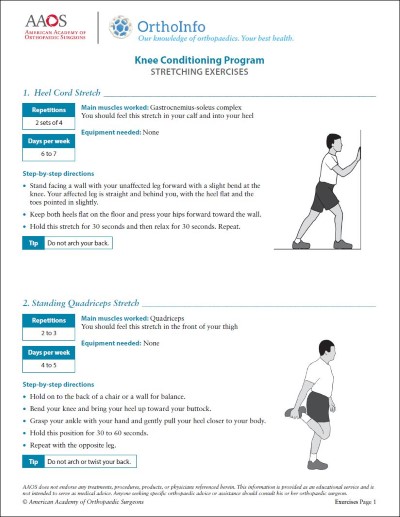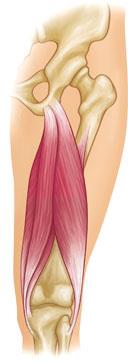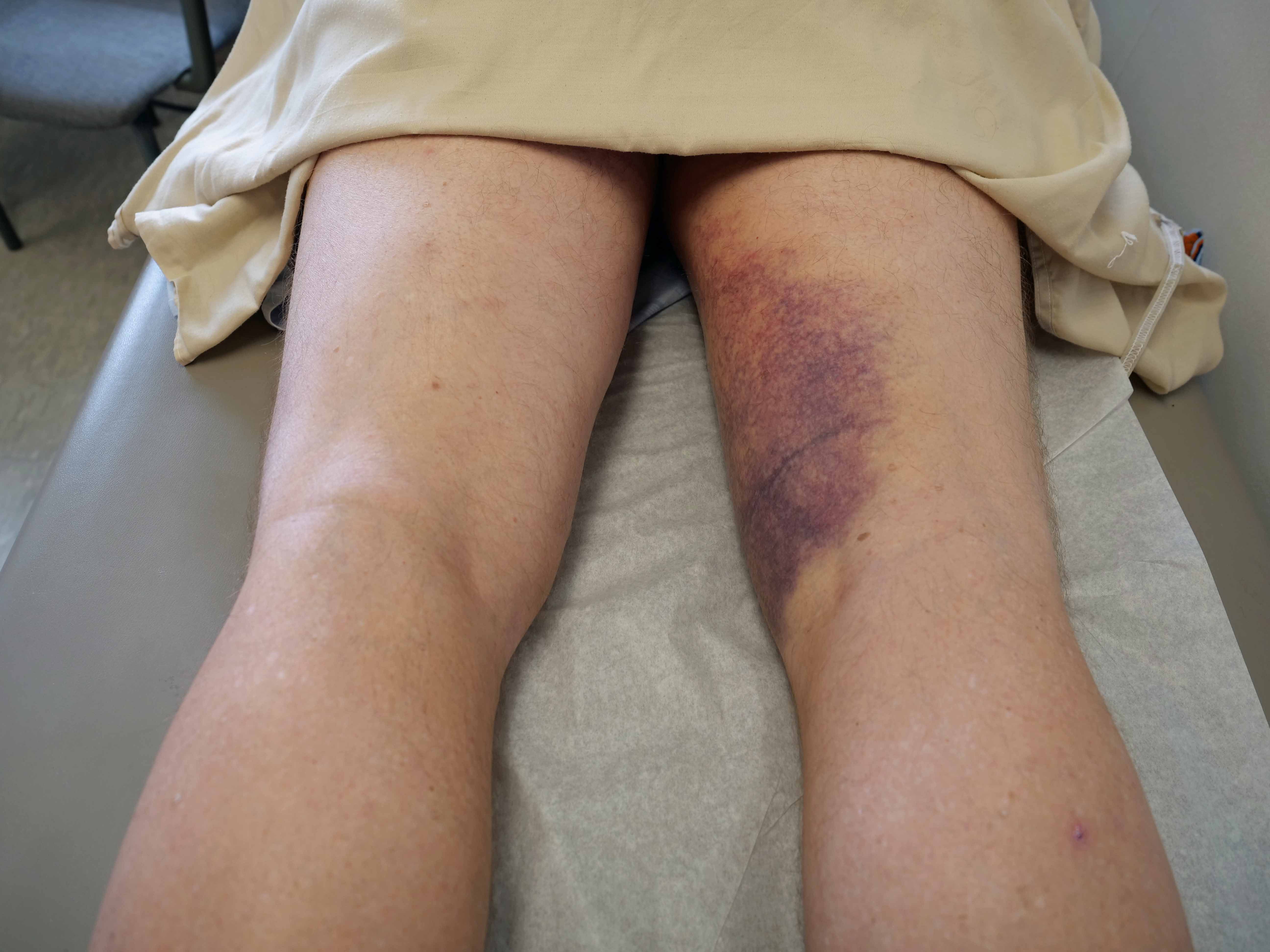Diseases & Conditions
Muscle Strains in the Thigh
A muscle strain (muscle pull or tear) is a common injury, particularly among people who participate in sports.
The thigh has three sets of strong muscles:
- The hamstring muscles in the back of the thigh
- The quadriceps muscles in the front of the thigh
- The adductor muscles on the inside of the thigh
The quadriceps and hamstrings work together to straighten (extend) and bend (flex) the leg. The adductor muscles pull the legs together.
The hamstring and quadriceps muscle groups are particularly at risk for muscle strains because they cross both the hip and knee joints. They are also used for high-speed activities, such as track and field events (running, hurdles, long jump), football, basketball, and soccer.
Muscle strains usually happen when a muscle is stretched beyond its limit, tearing the muscle fibers. This injury frequently occurs near the point where the muscle joins the tough, fibrous connective tissue of the tendon. A direct blow to the muscle may also cause a similar injury. Muscle strains in the thigh can be quite painful.
Once a muscle strain occurs, the muscle is vulnerable to reinjury. It is important to let the muscle heal properly and to follow preventive guidelines from your doctor.
Symptoms
- A person who experiences a muscle strain in the thigh will frequently describe a popping or snapping sensation as the muscle tears.
- Pain is sudden and may be severe.
- The area around the injury may be tender to the touch, with visible bruising if blood vessels are also broken.
- Swelling and areas of ecchymosis (“black and blue”) may often extend below the thigh into the calf and ankle. This may even occur 1 or 2 days after the injury.
Doctor Examination
- Your physician will ask about the injury and examine your thigh for tenderness or bruising.
- You may be asked to bend or straighten your knee and/or hip so the doctor can confirm the diagnosis.
- An X-ray may be needed if there is a possible fracture or other injury to the bone.
- Your doctor may also order a magnetic resonance imaging (MRI) scan to further evaluate the muscles and tendons in your leg.
Muscle strains are graded according to their severity. A grade 1 strain is mild and usually heals fairly quickly, whereas a grade 3 strain is a severe tear of the muscle that may take months to heal.
Treatment
Most muscle strains can be treated with the RICE protocol. RICE stands for:
- Rest. Take a break from the activity that caused the strain. Your physician may recommend that you use crutches to avoid putting weight on the leg.
- Ice. Use cold packs for 20 minutes at a time, several times a day. Do not apply ice directly to the skin.
- Compression. To prevent additional swelling, lightly wrap the injured area in a soft bandage or ace wrap.
- Elevation. To minimize swelling, elevate your leg up above the level of your heart.
Your doctor may recommend a nonsteroidal anti-inflammatory drug (NSAID), such as ibuprofen, for pain relief.
As the pain and swelling subside, physical therapy will help improve range of motion and strength.
The muscle should be at full strength and pain-free before you return to sports. This will help prevent additional injury.
Prevention
Risk Factors
Several factors can increase your risk of muscle strains, including:
- Muscle tightness. Tight muscles are vulnerable to strain. Athletes should follow a year-round program of daily stretching exercises.
- Muscle imbalance. Because the quadriceps and hamstring muscles work together, if one is stronger than the other, the weaker muscle can become strained.
- Poor conditioning. If your muscles are weak, they are less able to cope with the stress of exercise and are more likely to be injured.
- Muscle fatigue. Fatigue reduces the energy-absorbing capabilities of muscles, making them more prone to injury.
Precautions
You can take the following precautions to help prevent muscle strain:
- Condition your muscles with a regular exercise program. You can ask your physician about exercise programs for people of your age and activity level.
- Warm up before any exercise session or sports activity, including practice. A good warm up prepares your body for more intense activity. It gets your blood flowing, raises your muscle temperature, and increases your breathing rate. Warming up gives your body time to adjust to the demands of exercise and can help increase range of motion and reduces stiffness.
- Take time to cool down after exercise. Stretch slowly and gradually, holding each stretch to give the muscle time to respond and lengthen. You can find examples of activity-specific stretching exercises on this website or ask your physician or coach for help in developing a routine.
- If you are injured, take the time needed to let the muscle heal before you return to sports. Wait until your muscle strength and flexibility return to preinjury levels. This can take 10 days to 3 weeks for a mild strain, and up to 6 months for a severe strain, such as a hamstring strain.
Be Aware of Other Similar Injuries
While muscle strains can occur at the junction of the muscle and tendon or in the middle of the muscle, it is important to make sure you have not sustained a high-grade or complete injury of the tendon where it attaches to bone.
A hamstring tear — when the hamstring detaches from the ischial tuberosity, or “sit bone,” part of the ischium bone in the pelvis — can resemble a hamstring strain, with a similar bruising pattern. But unlike a strain, a tear can be a time-sensitive injury that may benefit from surgical reattachment.
If you injure your hamstring and the pain is closer to your ischium (the bottom of your pelvis) you may need to be evaluated for a tear of the hamstring tendons off of the ischial tuberosity.
Contributed and/or Updated by
Peer-Reviewed by
AAOS does not endorse any treatments, procedures, products, or physicians referenced herein. This information is provided as an educational service and is not intended to serve as medical advice. Anyone seeking specific orthopaedic advice or assistance should consult his or her orthopaedic surgeon, or locate one in your area through the AAOS Find an Orthopaedist program on this website.










